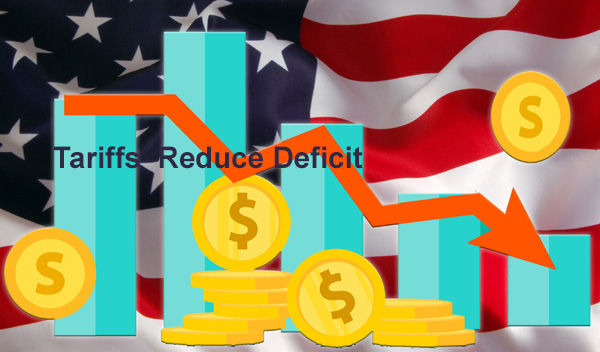The Congressional Budget Office (CBO), in a post August 22, declared that as of August 19, increases in tariffs implemented during the period from January 6, 2025, to August 19 will decrease primary deficits (which exclude net outlays for interest) by $3.3 trillion if the higher tariffs persist for the 2025‒2035 period. By reducing the need for federal borrowing, those tariff collections will also reduce federal outlays for interest by an additional $0.7 trillion. As a result, the changes in tariffs will reduce total deficits by $4.0 trillion altogether.
In total, the CBO estimates that the effective tariff rate for goods imported into the United States has increased by about 18 percentage points when measured against 2024 trade flows. The CBO routinely provides information to Congress on the budgetary effects of tariffs. Analysis of tariffs is their responsibility rather than the responsibility of the staff of the Joint Committee on Taxation because the laws that set tariffs are not part of the Internal Revenue Code. The CBO is an independent agency within the legislative branch of the U.S. government, also separate from the Treasury Department.
As tariffs changed frequently throughout 2025, they have regularly updated the Congress about projected tariff revenues. They currently are developing the short-term economic forecast (covering 2025 to 2028) expected on September 12.
Because of recent changes in tariffs, estimates are larger than the $2.5 trillion decrease in primary deficits and $0.5 trillion reduction in interest outlays that the CBO projected in early June in a report that examined the effects of the tariffs implemented between January 6 and May 13, 2025.
Both the current and earlier estimates use the same methods to generate the projections of tariff revenues, which are mainly based on data from the Census Bureau, Customs and Border Protection, and the Treasury. The methods account for a diversion of trade from countries facing high tariff rates to other countries facing lower tariff rates. The estimates are subject to significant uncertainty, largely owing to questions about timing, possible exceptions, and a lack of precedents.
The CBO incorporates the estimated effects of tariffs currently in place, when the Administration uses its authority to change tariff rates. Those estimates do not account for effects on the size of the economy, the post notes. The additional budgetary effect of those economic changes will be incorporated in early 2026 when they publish updated economic and baseline budget projections in The Budget and Economic Outlook: 2026 to 2036.


